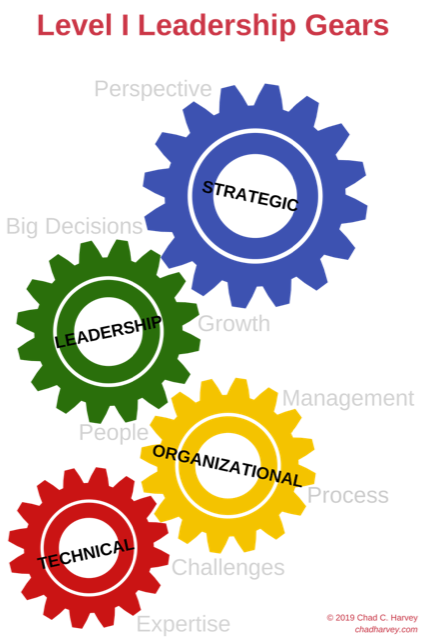Leadership Gears: Change the Game

If you don’t like the game, don’t just change the rules—change the game.
Most of us have heard the first part of that saying. But there’s one big problem with “If you don’t like the game, change the rules.” Changing the rules means that you’re still playing someone else’s game and saddled with restrictions. Changing the game, however, places you on an entirely different playing field without the limitations that hold others back.
With respect to products, services, and the “stuff” that you provide or deliver, changing the game means Deep Blue Ocean (check out Andi Simon’s work with this strategy) or Market Invention (see my friend Adam Vasquez’s new work, Toothfish: The Origin of Markets).
Concerning your leadership, though, “changing the game” means something else entirely.
If you haven’t read my earlier posts about Level 1 Leadership Gears and Critical Shift Points, I encourage you to do that now. In this post, we’ll discuss making the final gear shift necessary to change your game.
Changing Your Leadership Game
When you and your organization shift through leadership gears, you will eventually reach a point where things either plateau or you find you’re changing your leadership game. Changing your leadership game means deliberately evolving who you are, what you do with your time, and how you make decisions. Note that unlike the lower level leadership gears (which involve your team), getting to this top-level gear involves you and you alone.

Nine Tips for Changing Your Leadership Game
- Reprogram your inputs. What goes into both your body and your mind profoundly affects everything that comes out. Food and media consumption are two examples. Be deliberate about the sources and types of information that you absorb. Read widely and as often as possible—including fiction. (I can’t stress this enough as the answers to your questions do not lie in business books; they reside within the human experience.)
- Get—and give—perspective. Get yourself a coach or a mentor. Better yet, get two or three. Peer advisory boards like the ones I chair for Vistage Worldwide are excellent for expanding your perspective. Get the most from your peer board or coaches by allowing them to challenge you. In turn, make sure that you challenge them. Also, provide give-and-take opportunities for your team members, enabling them to offer and expand their perspective.
- Look inward as well as outward. Whether you call it “self-reflection,” “mindfulness,” “meditation,” “nature bathing,” or “alone time,” carve out quiet time when you can look inward and spend time with yourself. Mindfulness is a great tool for this, and my good friend Matt Tenney is one of the best subject matter experts on the topic.
- Move from reactive to proactive mode. First, turn off every single notification on your portable devices. Second, create a plan for restructuring how you work with email. We have unintentionally moved toward an “always-on” society where people expect instantaneous responses. The operative word is “response.” Unless you’re an emergency responder that must roll out when the bell rings or the alarm sounds, whatever message is waiting for you can wait a bit longer.
- Focus on your strengths. Far too many people don’t invest the time to figure out their strengths. They dwell on weaknesses, times they didn’t meet expectations, or what could have been if they had been “more” of something. Instead of focusing on what you’re not good at, figure out how to blunt or mitigate your weaknesses. Once you do that, it becomes much easier to focus on your strengths. My ebook Leadership in Real Life shares more information about this important step.
- Look forward, not back. Satchel Paige famously observed “Don’t look back. Something might be gaining on you.” More often than not, what’s gaining on you when you look back is insecurity, doubt, and second-guessing. It’s vital to learn lessons from what you’ve experienced, but don’t dwell on the past because it will eat your future.
- Run the engine when it’s hot. Determine your peak energy levels and structure your work time appropriately. Put another way, don’t punch a clock; punch when you’re strongest. If you’re most creative between the hours of 8am-11am, don’t schedule meetings during that time. Block off that time for the type of work that requires a hot engine.
- Say no. Too many executives conflate a heavy schedule with effectiveness. Busyness as an indicator of productivity is a fallacy. Be judicious about where you spend your time, and you will find that you have more of it than you ever thought possible.
- Give and receive joy every day. The strongest, most effective leaders know three things about joy. First, they understand what gives them joy and seek those things out. Second, they gain great joy from giving it with no strings attached. Finally, regularly self-reflective leaders are equipped to recognize and welcome unexpected sources and types of joy into their lives.
Got Game?
Shifting your leadership into the highest possible gear will not happen accidentally and it is not for everyone. It is only for those who realize that the game they’re playing isn’t the game that they were meant to play.
If these words resonate with you, give me a call and let’s talk about what the real game looks like and how you might suit up and play to win.
